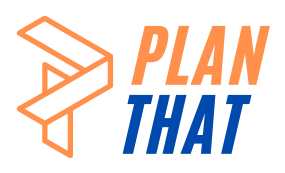There are people who prefer Agile and people who prefer Waterfall — and this is understandable, as there are completely different systems. Trying to decide which one is best will, by and large, depend upon the job at hand, but understanding how each one works is the first step toward making the decision. For many years, it was the Waterfall method that was used, so this is well established system. As a result of problems that some programmers faced, however, the Agile method came into being.
What is the Agile Method?
This is a system whereby it is possible to flip between different aspects of a project and make changes as and when they are needed. It is not necessary for staff to be in place and ready to carry out their part of the job at a set time, as others can be doing their own parts as they’re able. Once all the parts have been finished independently, it is possible for the parts to be put togther and the final project seen.
What Are the Main Advantages of the Agile Method?
The Agile Method gives users a lot more flexibility. There is no need to worry if there has to be an alteration because this can be done at any time. “Agile” even extends to phases that had previously been considered to be complete. There’s no need for the same rigid adherence to keeping stages in order. Instead, there is more of an emphasis on the way the system is used by the people involved. The Agile Method allows project participants to lead the process rather than allow the system to pull the strings.
What is the Waterfall Method?
The Waterfall Method works just as you would imagine by the name — all the features and stages in the life of a project cascade down. Once a stage is started, it has its own natural end. It is when this end is reached that the next stage starts. As most projects will follow pretty much the same pattern — Conception, Initiation, Analysis, Design, Construction, Testing, Implementation, and Maintenance — the system is suitable for many industries.
What Are the Main Advantages of the Waterfall Method?
The advantage is that each aspect of a project can be contained into a separate partition. As a result, it’s possible to complete the project with fewer people. Once the information has been captured, there can be a number of people accessing it without risking a major failing of the project if certain people who have had an input are no longer involved. This does not mean there are no problems here. There are occasions when the system does not allow the flexibility that may be needed.
The Waterfall name is an ideal description as there are limits to what can be changed. It’s the preferred system for stable projects. Once one stage is completed, there is no way to change it-in the same way that you cannot push water back up a waterfall. Therefore, it is important to get the details right before the project starts. Although this can be an advantage because it means that there is a clear vision from the beginning, it also means that the team needs to put in some time and effort before any real work begins.
The Verdict on the Two Systems
In reality, it is hard to say which one is the best. Both methods are suitable for certain jobs and both excel under certain circumstances. Waterfall may have been criticized in the past, but the fact that it is still in use shows it still has something to offer. When there are clear deadlines and the job has to be done correctly first time, Waterfall is likely out on top. If there is no need for feedback or no possibility of getting it throughout the job, then it will be best to use Waterfall. This means that when there are certain people brought in just to deal with one part of the scheme, there is no need for them to be around throughout the life of the project. Once their part is done they can be released, so that they will not have to be on the payroll all the time.
With Agile, there are going to be lower costs at the onset, yet there’s no need to sacrifice the ability to give each area the attention it needs. Therefore, there are plenty of options to make alterations. This will be especially useful when there are aspects that are likely to be found throughout the scheme — but that cannot be envisaged before the project starts. There is no need to pin the customer down to the exact details, as they will be allowed to change their minds and adapt their ideas.
If you want to be able to make changes and alter work patterns, then Agile will be the best. If you have strict, unchanging plans that allow you to follow a strict pattern, choose Waterfall. Each will be the best in some cases and worst in others.
